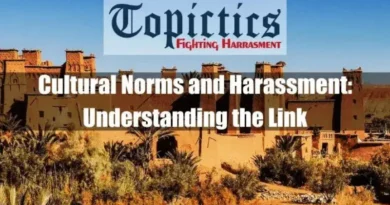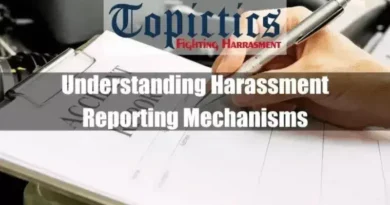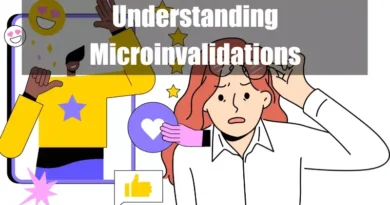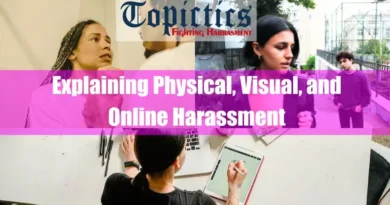Creating an Effective Anti-Harassment Policy Under Title IX
Takeaways
| Key Points |
|---|
| Under Title IX, educational institutions must prohibit sex-based discrimination, including sexual harassment, assault, dating violence, stalking, and retaliation, and are required to promptly and effectively address complaints. |
| The 2020 Title IX Final Rule expanded the definition of sexual harassment, mandated a formal complaint process, and required postsecondary institutions to hold live hearings with cross-examinations. |
| Effective anti-harassment policies must define prohibited behaviors, include protections for LGBTQ+ individuals, mandate reporting and confidentiality, and provide supportive measures like counseling and academic accommodations. |
| Institutions should develop policies with stakeholder input, ensure alignment with federal and state laws, and establish clear reporting mechanisms, investigation procedures, and grievance processes. |
| To maintain compliance, policies must be regularly reviewed, staff and students must receive training, audits should ensure enforcement, and gaps in policy implementation must be promptly addressed. |
Introduction
Title IX of the Education Amendments of 1972 is a federal law that prohibits sex-based discrimination in educational programs and activities that receive federal financial assistance. Title IX’s scope extends beyond just sexual harassment; it also includes sexual assault, dating violence, stalking, and other forms of gender-based violence. Educational institutions must establish and implement an anti-harassment policy that aligns with Title IX’s requirements.
This policy should clearly define prohibited behaviors, outline reporting and grievance procedures, and establish a framework for preventing and responding to incidents of harassment and violence.
Understanding the Legal Framework
Key Elements of Title IX
Under Title IX, educational institutions have several key obligations:
- Prohibition of Sex-Based Discrimination: Institutions must not engage in or tolerate any form of discrimination based on sex. This includes protection against sexual harassment, sexual assault, dating violence, stalking, and retaliation.
- Institutional Responsibility: Schools are required to take immediate and appropriate action to investigate and address complaints of sex-based harassment or violence. The institution’s response must be prompt, fair, and effective.
- Rights of Complainants and Respondents: Title IX ensures that complainants and respondents are treated equitably. This includes providing support measures, a transparent investigation process, and opportunities to participate in hearings.

Recent Updates to Title IX Regulations
The 2020 Title IX Final Rule introduced significant changes to how educational institutions must handle complaints of sexual harassment and related offenses:
- Expanded Definition of Sexual Harassment: The updated regulations broaden the definition of sexual harassment to include quid pro quo harassment, unwelcome conduct that is severe, pervasive, and objectively offensive, and incidents of sexual assault, dating violence, domestic violence, and stalking as defined under the Clery Act and Violence Against Women Act (VAWA).
- Formal Complaint Process: The regulations specify that institutions are only required to investigate formal harassment complaints. The complainant or the Title IX Coordinator must file a formal complaint.
- Live Hearings with Cross-Examination: Postsecondary institutions must hold live hearings during which each party’s advisor may cross-examine the other party and any witnesses. The decision-maker must be impartial and trained to evaluate evidence.
Impact on Educational Institutions
These changes have increased educational institutions’ obligations under Title IX. Schools must ensure that their policies cover a broader range of prohibited behaviors, including dating violence and stalking, and that their procedures comply with the new regulations.
Institutions must also ensure that their response mechanisms are well-documented, fair, and accessible to all community members.
Key Components of an Effective Anti-Harassment Policy

Defining Harassment Under Title IX
An effective policy must clearly define all forms of prohibited conduct under Title IX, including:
- Sexual Harassment: Any unwelcome conduct of a sexual nature that is severe, pervasive, and objectively offensive enough to deny a person equal access to education.
- Unwelcome Conduct: Behavior that is so severe, pervasive, and objectively offensive that it effectively denies a person equal access to education.
- Quid Pro Quo Harassment: Situations where a school employee conditions educational benefits on participation in unwelcome sexual conduct. This does not need to be pervasive to be considered harassment.
- Sexual Assault: Any non-consensual sexual act, including rape, fondling, incest, and statutory rape, which also does not require pervasiveness to meet the threshold for Title IX violations.
- Dating Violence: Violence committed by a person who is or has been in a romantic or intimate relationship with the victim, characterized by behaviors such as physical violence, threats, or emotional abuse.
- Stalking: A pattern of repeated, unwanted attention, harassment, or any other course of conduct that causes the victim to feel fear for their safety or suffer substantial emotional distress.
- Retaliation Prohibition: The policy must explicitly prohibit retaliation against individuals who report harassment or participate in an investigation, ensuring their protection from adverse actions.
- Consent Definition: The policy should define consent as informed, voluntary, and revocable at any time, making it clear that consent must be an ongoing and mutual agreement.
Incorporating Protections Against Discrimination
Title IX protections extend to individuals regardless of their sexual orientation, gender identity, or gender expression. The anti-harassment policy must explicitly state that discrimination or harassment based on these characteristics is prohibited.
This inclusion is crucial for protecting LGBTQ+ students from harassment, ensuring their rights are upheld, and providing them with a safe educational environment.
Mandatory Reporting and Confidentiality Requirements
The policy must delineate the roles of mandatory reporters—those required to report any knowledge of sexual harassment or violence to the Title IX Coordinator. These typically include faculty, staff, and administrators.
Additionally, the policy should address how confidentiality will be handled, outlining the institution’s commitment to protecting the complainant’s privacy while fulfilling its legal obligations to investigate and remedy the reported conduct.
Supportive Measures
Outline the availability of supportive measures such as counseling, academic accommodations, and no-contact orders. Regardless of whether a formal complaint is filed, these measures should be available to both complainants and respondents.
Restorative Practices
Where appropriate, consider incorporating restorative justice approaches into the resolution process. Restorative practices can help address harm, foster accountability, and promote healing within the community.
Policy Development Process

Stakeholder Involvement (Students, Faculty, Legal Counsel)
Developing an anti-harassment policy that meets Title IX requirements involves collaboration with various stakeholders. Engaging students, faculty, staff, and legal experts ensures the policy is comprehensive, inclusive, and legally sound.
Legal counsel is critical in ensuring the policy aligns with federal and state laws and adequately protects the institution and its community members.
Gathering and Integrating Feedback
An effective policy development process includes gathering input from the entire campus community. Feedback can be collected through surveys, focus groups, or public forums. This feedback is essential for identifying potential gaps or issues in the policy and ensuring that the final document reflects the needs and concerns of all community members.
Alignment with Federal and State Laws
The policy must align with Title IX and any applicable state laws. In some cases, state laws may provide additional protections beyond those required by Title IX. The policy should clearly state how it complies with both sets of regulations, ensuring comprehensive protection against harassment and violence.
Drafting the Policy

Clear Definitions and Scope
The policy must provide clear, precise definitions of all forms of prohibited conduct, including sexual harassment, sexual assault, dating violence, and stalking. The scope should specify who the policy applies to—students, faculty, staff, and visitors—and in what contexts, such as on-campus, off-campus, and online activities.
Reporting Mechanisms
Accessible and clear reporting mechanisms are vital to the effectiveness of an anti-harassment policy. Institutions should offer multiple reporting options, such as anonymous reporting and online systems, to ensure that all community members feel comfortable coming forward with complaints. Reporting systems should be well-publicized and easy to navigate.
Investigation Procedures (Trained, Unbiased Decision Makers)
Title IX requires that investigations be conducted by individuals who are trained, unbiased, and knowledgeable about Title IX regulations. The policy should outline the steps of the investigation process, including timelines, evidence collection, and interview procedures. The investigation must be thorough, impartial, and conducted with respect for all parties’ rights.
Grievance Process: Step-by-Step Procedures
The grievance process should be clearly outlined in the policy, providing a detailed roadmap for how complaints will be handled:
- Filing a Formal Complaint: This section should provide procedures for submitting a formal complaint to the Title IX Coordinator, including the necessary documentation and forms.
- Investigation: Detailed steps of the investigation process, including timelines, the rights of the parties involved, and how evidence will be evaluated.
- Hearing: For postsecondary institutions, the policy should detail the live hearing process, including the roles of decision-makers, the procedures for cross-examination, and how decisions will be made.
- Appeals: The policy must explain the process for appealing decisions, including the grounds for appeal and the procedures for submitting an appeal.
Supportive Measures for Complainants and Respondents
Title IX requires institutions to offer supportive measures to complainants and respondents throughout the grievance process. These measures may include academic accommodations, no-contact orders, counseling services, and other forms of support designed to ensure both parties can continue their education without undue hardship.
Implementation and Training

Dissemination of Policy to All Relevant Parties
After the policy is finalized, it must be widely disseminated to all relevant parties, including students, faculty, staff, and administrators. This can be done through the institution’s website, student handbooks, and direct communications.
The goal should be to ensure that everyone is aware of the policy, understands their rights and responsibilities, and knows how to report incidents of harassment or violence.
Comprehensive Training Programs (For Staff, Faculty, and Students)
Training is a critical component of implementing the policy. All institution members should receive training on the policy, focusing on recognizing, reporting, and preventing harassment. Training should be tailored to the specific roles and responsibilities of different groups. For example, faculty and staff may need more in-depth training on their obligations as mandatory reporters. At the same time, students should be educated on their rights and available resources.
Creating a Culture of Compliance and Awareness
In addition to formal training, institutions should work to create a culture of compliance and awareness. This involves promoting a campus environment where harassment and violence are not tolerated and individuals feel safe reporting incidents.
Leadership should visibly support the policy, and awareness campaigns should regularly reinforce the importance of respect, safety, and accountability.
Monitoring and Compliance

Regular Policy Reviews and Updates
Regular reviews and updates are essential to ensure the anti-harassment policy remains effective and aligned with evolving legal standards. Institutions should establish a timeline for periodic policy reviews, ideally annually. During these reviews, feedback from the campus community and any changes in federal or state laws should be considered.
Staying informed about legal developments and best practices in Title IX compliance will help the institution maintain a robust and legally sound policy.
Auditing Compliance with Title IX
Compliance with Title IX requires ongoing monitoring and auditing of the institution’s procedures and practices. This includes reviewing how complaints are handled, ensuring that all mandatory training sessions are completed, and verifying that reporting mechanisms function as intended.
Impartial reviewers should conduct audits, and the findings should be used to make necessary adjustments to the policy or its implementation. Regular audits help identify gaps in compliance and ensure that the institution meets its obligations under Title IX.
Addressing Non-Compliance and Gaps
If non-compliance or gaps in the policy are identified, immediate action must be taken to address them. This may involve revising the policy, providing additional training, or improving reporting and investigative processes. The institution should have a clear plan for responding to non-compliance, including documenting the issue, identifying the cause, and implementing corrective measures.
Addressing these issues promptly is crucial to maintaining the integrity of the institution’s Title IX policy and protecting the rights of all community members.
Handling Specific Scenarios

Dealing with Off-Campus Incidents
Title IX’s protections extend beyond on-campus activities to include off-campus incidents that substantially impact the educational environment. The anti-harassment policy must clearly define the institution’s jurisdiction over off-campus incidents, including those that occur during school-sponsored events, online activities, or in situations where the effects of the harassment or violence are felt on campus.
The policy should outline how these incidents will be reported, investigated, and addressed, ensuring that all affected parties receive the support and protection they need.
Addressing Cases Involving LGBTQ+ Individuals
Title IX protections apply to all individuals, regardless of their sexual orientation, gender identity, or gender expression. The anti-harassment policy must explicitly prohibit discrimination and harassment based on these characteristics.
Additionally, the policy should address the unique challenges that LGBTQ+ individuals may face in reporting harassment or violence. This includes providing access to support services that are sensitive to the needs of LGBTQ+ students and ensuring that all investigations are conducted with respect for their privacy and dignity.
Policies for Pregnant and Parenting Students
Title IX also prohibits discrimination against students based on pregnancy or parenting status. The anti-harassment policy should include specific provisions that protect the rights of pregnant and parenting students, ensuring they have equal access to educational opportunities. This includes providing reasonable accommodations, such as flexibility in attendance or deadlines, and protecting them from harassment or discrimination based on their pregnancy or parenting status.
The policy should also outline the process for requesting accommodations and ensure students know their rights.
Conclusion
An effective anti-harassment policy under Title IX is essential for creating a safe and equitable educational environment.
Institutions can protect the rights of all community members by clearly defining prohibited conduct, establishing robust reporting and investigation procedures, and ensuring compliance with federal and state laws.
Regular reviews and updates and comprehensive training and awareness efforts will help maintain a culture of respect and accountability.
Ultimately, a strong Title IX policy is a legal requirement and a critical component of fostering a supportive and inclusive campus environment.
FAQ
How should an anti-harassment policy define prohibited conduct under Title IX?
An effective policy must clearly define prohibited conduct, including specific examples of sexual harassment, such as unwelcome sexual advances, requests for sexual favors, and other verbal or physical conduct of a sexual nature. This clarity ensures all parties understand what behaviors are unacceptable.
What procedures should be in place for reporting harassment complaints?
The policy should establish clear, accessible procedures for reporting harassment, designating specific personnel to handle complaints, and ensuring confidentiality. Multiple reporting channels, including anonymous options, encourage victims to come forward without fear of retaliation.
How can schools ensure prompt and equitable resolution of harassment complaints?
Schools must adopt and publish grievance procedures that provide for prompt and equitable resolution of complaints. This includes timely investigations, impartial decision-makers, and a clear timeline for resolving complaints to comply with Title IX requirements.
What role does training play in enforcing an anti-harassment policy?
Regular training for students and staff on recognizing, preventing, and reporting harassment is crucial. Training ensures the school community understands the policy, their rights, and responsibilities, fostering a safe educational environment.
How should an anti-harassment policy address retaliation?
The policy must explicitly prohibit retaliation against individuals who report harassment or participate in investigations. It should outline consequences for retaliatory actions, ensuring protection for complainants and witnesses.
Why is it important to include examples of harassment in the policy?
Providing specific examples of prohibited behaviors helps individuals recognize harassment and understand the policy’s scope. This clarity aids in preventing misconduct and encourages reporting of violations.
How can schools ensure their anti-harassment policy complies with Title IX?
Schools should regularly review and update their policies to align with current Title IX regulations and guidance. Consulting legal experts and incorporating feedback from the school community ensures comprehensive compliance.
What measures should be taken to maintain confidentiality during investigations?
Maintaining confidentiality is essential to protect all parties involved. The policy should outline procedures for handling information discreetly, sharing details only with individuals directly involved in the investigation and resolution process.
How can an anti-harassment policy be effectively communicated to the school community?
Disseminate the policy through multiple channels, such as handbooks, websites, and training sessions. Ensure accessibility for all, including translations and formats for individuals with disabilities, to promote widespread understanding and adherence.
What steps should be taken if harassment occurs off-campus?
The policy should clarify that it applies to off-campus conduct that affects the educational environment. Schools are responsible for addressing harassment that occurs in any context related to the institution, ensuring a safe environment for all students.
How should an anti-harassment policy address off-campus incidents?
An effective policy must clarify that it covers off-campus conduct if it affects the educational environment. This includes incidents during school-sponsored events or actions that create a hostile environment on campus. Such clarity ensures comprehensive protection under Title IX.
What is the significance of designating a Title IX Coordinator?
Appointing a Title IX Coordinator is legally required. This individual oversees compliance, manages complaints, and ensures effective policy implementation. Clear communication about the Coordinator’s role and contact information is essential for accessibility.
How can schools ensure impartiality during investigations?
Schools must implement procedures ensuring investigators and decision-makers are free from conflicts of interest or bias. This includes training personnel to handle complaints objectively and equitably, maintaining the integrity of the process.
Why is it important to outline potential sanctions in the policy?
Clearly stating possible disciplinary actions for policy violations informs the community of consequences, deterring misconduct. It also ensures transparency and consistency when enforcing the policy.
How should supportive measures be addressed in the policy?
The policy should detail available supportive measures for complainants and respondents, such as counseling services, academic accommodations, or schedule adjustments, to maintain equal access to educational programs.
What is the role of confidentiality in the grievance process?
Maintaining confidentiality protects the privacy of all parties involved. The policy should specify how information will be handled and the extent to which confidentiality can be maintained during investigations.
How can schools address false allegations in their policy?
The policy should state that knowingly making false allegations is prohibited and outline consequences for such actions, ensuring the integrity of the grievance process.
Why is it essential to include a non-discrimination statement?
Including a non-discrimination statement reaffirms the institution’s commitment to providing an environment free from sex-based discrimination, aligning with Title IX requirements.
How should the policy handle conflicts between federal and state laws?
The policy must comply with Title IX and consider relevant state laws. In cases of conflict, institutions should seek legal counsel to navigate compliance effectively.
What is the importance of record-keeping in Title IX compliance?
Maintaining detailed records of reports, investigations, and resolutions is crucial for demonstrating compliance with Title IX and for use in potential legal proceedings.









